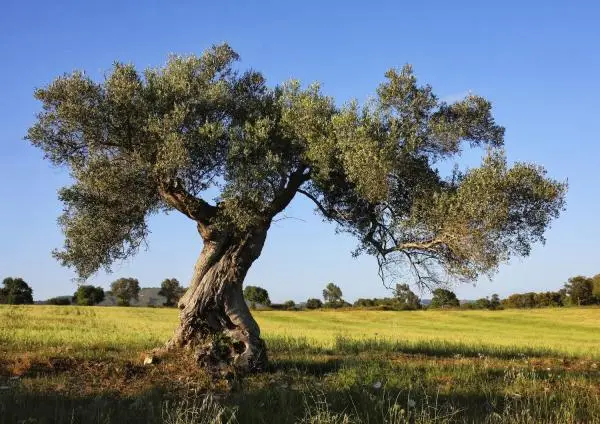We have all heard at some time that, in past times, the Iberian Peninsula was so full of trees that a squirrel could have gotten through without stepping on the ground. The forest mass in other times was incredible in Spain, but unfortunately, this is no longer the case. The possibilities that the wood of the trees give in the construction of furniture and many other uses have caused indiscriminate felling. If there was a time when there was 90% in the forest mass, now it barely reaches 35%. However, there are still some trees in Spain that have been on the earth for more than a thousand years; for example, in communities such as Andalusia or Castilla y León. To highlight only a few, we will name the olive tree of about 2000 years in the Cabo de Gata Park or the yew trees of the Sierra de Cazorla. Also in Asturias, there is a thousand-year-old oak and in Chamartín de la Sierra, Ávila, you can find an oak that is more than a thousand years old.
In general, the species most long-lived in our country are yew, olive, oak, oak, chestnut, and pine. They have been there for many years, present in the country, and have suffered all kinds of abuse and exploitation.
Yew, eternity and hardness
It is one of the most typical trees of the Peninsula and is usually found in mountainous areas. It is considered the oldest tree in Europe, being able to live 4,000 years. As an anecdote, the Celtic peoples held this tree in great esteem and did many rituals around it, precisely because of its ability to live for so many years they associated it with ideas such as experience or immortality. It is not a tree that attracts physical attention, it is small, its trunk is barely 15 meters, coniferous and very normal, and it does not usually form forests. Although its wood is highly valued, because it is hard and resistant, in Spain the yew is today a protected species. Yew trees suffered great persecution precisely because of their high value in cabinetmaking and only a small part of those that once existed remain.

The olive tree, Castilian jewel
We all know the importance of olives and olive oil in Spain. Precisely thanks to the exploitation of its fruit, it is the most valued tree in our country. Spain is the largest producer of table olives in the world and a large producer of olive oil. We can find large olive groves in provinces such as Jaén and Córdoba. It is a leafy tree, but not very long, its trunk is about 10 meters. Like yew, it can live for many years.
This tree is liked for its function (its wood is hard and highly demanded in cabinetmaking, its fruit and leaves are also used for medicinal uses) and also for its beauty. Like many other species, it has also suffered enormous feelings, although it is one of the trees that are most valued and cultivated. There are currently 282 million olive trees in Spain.

The oak, the tree of acorns
It is also a very Castilian tree, with an evergreen, long trunk and typical of the Mediterranean climate. Its fruit (the acorn) is not as valued as the olive tree for food. Spain is one of the countries where there are currently more holm oaks, even in the center of the country, despite its great extermination. They are also found in France and off the coast of Italy. It is one of the typical trees of the Iberian pasture because it resists cold and heats very well.
Holm oak is used to produce charcoal and firewood, its wood is also a very hard and resistant wood, but as it grows so slowly it is not one of the most used trees in this industry.
Extractions in holm oak forests with specialized machinery have led many associations and websites to denounce this practice.

The chestnut, very Iberian
It is a very long tree that can reach 35 meters in height, it has a very strong system, like other trees such as oaks. It also grows rapidly, more than one meter per year and it is, as we have said, one of the oldest trees that we have in the Peninsula. Spain is one of the countries where there are currently more chestnut trees, a tree typical of the Mediterranean climate, both in the south and in the north of the country. It is a bush tree. Today it occupies an area of 1,260 million square meters in Spain and 1% of the entire wooded area of the country. Its wood is highly valued for the construction of furniture, which has led to heavy felling.

The pine, perennial and tall
It is a very long tree (its trunk can grow up to 20 meters) and is an evergreen, typical of cold areas. Its fruit, the pine nut, is highly valued in food. Many of the pine plantations are exploited for timber production, which also leads to many protests against this abuse. One of its varieties, fir, is also cut down to be used as a Christmas ornament in many countries around the world. For this reason, nowadays more and more people use plastic for the same purpose since December is the month in which fir trees suffer the most due to this tradition.


